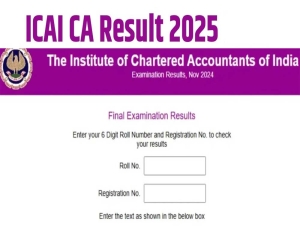The festival starts from Dhanteras and spreads over five days culminating on Bhai Duj. These are extremely potent days for siddhis, writes Yogi Ashwini
Creation exists in layers. The physical comprising the five elements is only one layer to it. As you progress in the sadhna of yog, the various layers of creation unfold in front of you and you realise that the physical, which most of us spend our life and birth pursuing, is just a small aspect of creation, a layer which is directly controlled by the world of ether, which is the subject of yog.
Most of us have grown up listening to stories from Ramayana, of the noble king Ram, his virtuous wife Sita, and devoted brother lakshman. Diwali, as most understand, is the day when these three returned to Ayodhya after an exile of 14 years. In this article, we will highlight how it is perceived in the realm of energy. lord Ram is a reflection of the energy of Preserver (Vishnu), Devi Sita an incarnation of his force (Goddess lakshmi), and lakshman is a reflection of Sheshnaag, which is where the two energies rest.
These three shaktis manifested in physical creation (bhulok) for a purpose, to uphold dharma and to protect creation. All through their life they did just that, and once the purpose was fulfilled, they returned to Vaikunth — first lakshman, then Sita and finally Ram. You might be aware that Devi Sita spent her later life in the ashram of Rishi Valmiki. Very few know that it was not lord Ram who asked her to go. In fact, it was she who sought his leave because her purpose in physical creation was over and she knew that if she continued after, it would be only for bhog, which would tie them to physical creation, whereas their destination was Vaikunth. So she left. Even lord Ram lived off Kusha grass after she left.
The festival of Diwali starts from Dhanteras and spreads over five days culminating on the day of Bhai Duj. These are extremely potent days for manifestation and siddhis.
Dhanteras is the day of Dhanwantari, the physician of devas, who emerged with an amrit kalash (pot of nectar) along with Goddess lakshmi on this day. On this day, sadhna and charity are performed under Guru sanidhya by those seeking good health and wealth. Also, a diya is lighted on this day for Yama, the lord of death, to balance the three forces. The next day, Narak Chaturdashi, is the day when Goddess lakshmi and lord Vishnu, in their incarnations as Satyabhama and Krishna, killed the demon Narakasura. It is the day of lakshmi sadhna for spiritual boons.
Diwali or Kartik Amavasya is the day to celebrate the siddhis so gained. lighting of diyas on this day is symbolic of the siddhis with which one illuminates the body to mark the homecoming of Ram (the energy of Vishnu). It is the night of homecoming of one of the most powerful forces in the universe, the force of Vishnu. Ayodhya, in the case of a sadhak, is the body and lights are the various siddhis, which are ignited in different parts of the body through specific mantras and sadhnas under the guidance of a Guru, on the night of Diwali.
On the night of Diwali, the force of Vishnu enables the sadhak to acquire the various siddhis of yoga and Sanatan Kriya easily. Anima is the siddhi of reducing the size of the body at will, mahima is ability to increase its size infinitely. Garima is the siddhi to become infinitely heavy; laghima is the siddhi to shed off all the weight in the body to become feather light. Prapti is the siddhi through which one gains unrestricted access to all places in creation. Prakamya is the siddhi to manifest one’s thoughts and desires. Ishtva is the lordship of creation. Vashitva is the control over others. These eight siddhis can be attained even in this day and age with the correct practices under the guidance of a Guru.
Sanatan Kriya details the technique of samyam, which is a combination of dharna, dhyan, and samadhi, for a complete merger, when there are no two bodies, everything becomes one whole, poorna. As goes the shloka, “Om poornamadah poornamidam poornaat poornamudachhyate, poornasya poornamadayah poornameva va shishyate.” In the Samyam Kriya, a sadhak becomes aware of the name, form, and energy of a specific object and fixes his/her gaze on it along with chanting specific mantras, as prescribed by one’s Guru. This results in the sadhak acquiring the siddhis associated with that entity. What that entity is varies from individual to individual, depending on individual capacity and desire.
To give an example of a Diwali practice, “Ya devi sarvabhuteshu shakti roopen sansthitha, namastasyei, namastasyei, namastasyei namo namah” is the mantra which when channelised by one’s Guru, and chanted while keeping awareness of the name, form and shakti of the Devi while fixing the gaze on an object or image or thought (as prescribed by your Guru) endows the practitioner with phenomenal glow and radiance of the Devi, such that he/she can attract whatever he/she desires in the physical or the world of energy. The mantra, however, must be given by and practised under the supervision of your Guru.
Govardhan Puja is associated with the lifting of the Govardhan Parvat by adolescent Krishna, incarnation of lord Vishnu, to protect the villagers. Once again, it is a day when the energy of Vishnu peaks. Bhai Duj is associated with the episode of Goddess lakshmi making Asur Bali her brother and asking him to release lord Vishnu whom he had taken to Paatal lok with him. It is the day of return of lakshmi and Vishnu.
Vishnu is the preserver who runs Creation and lakshmi is his force. The five days thus abound in the experiences and manifestations pertaining to physical creation through right practice of yog under a Guru. Guru gives you a mantra, which when chanted as prescribed, is bound to fructify into siddhis.
The writer is the guiding light of Dhyan Ashram and can be reached at www.dhyanfoundation.com

























